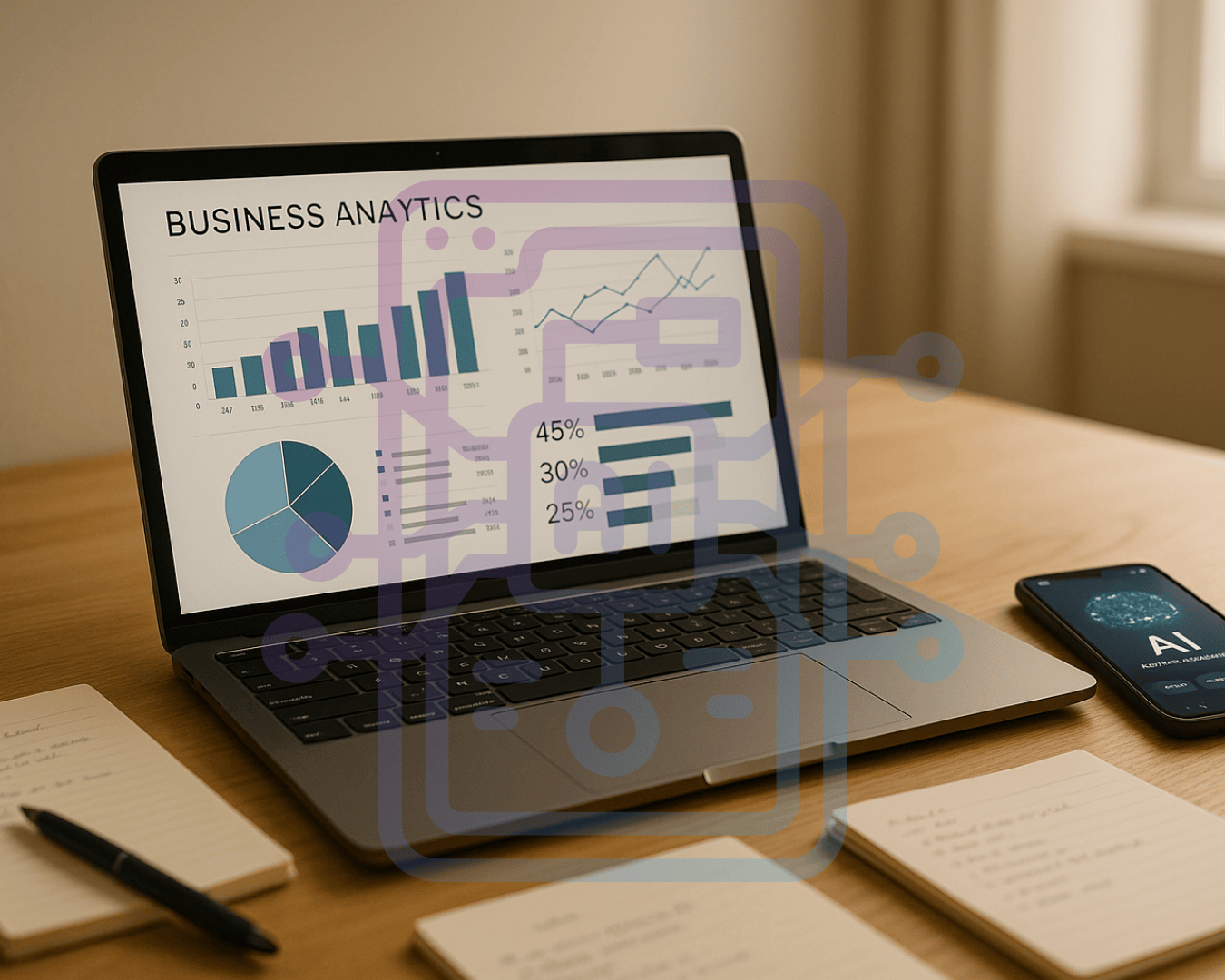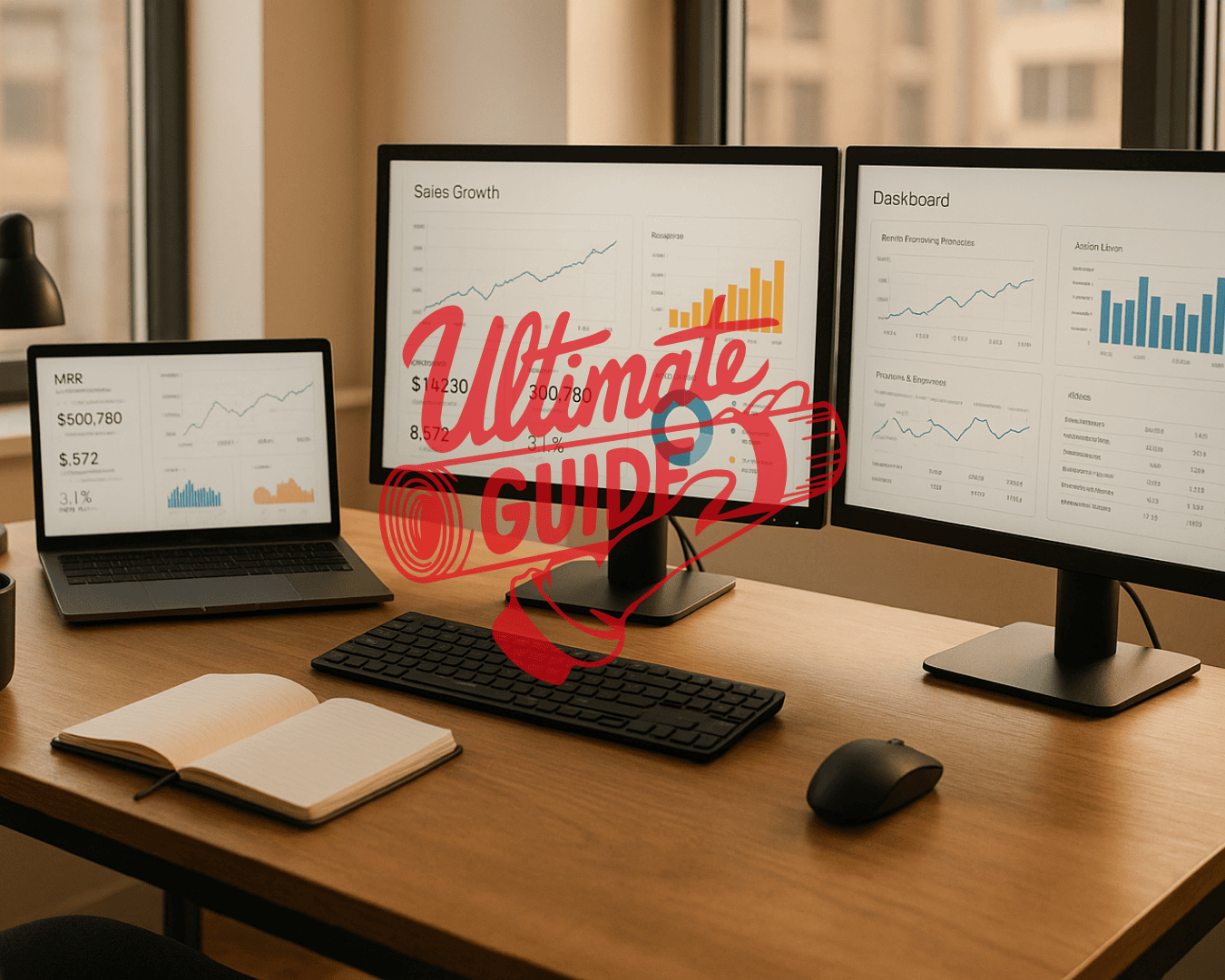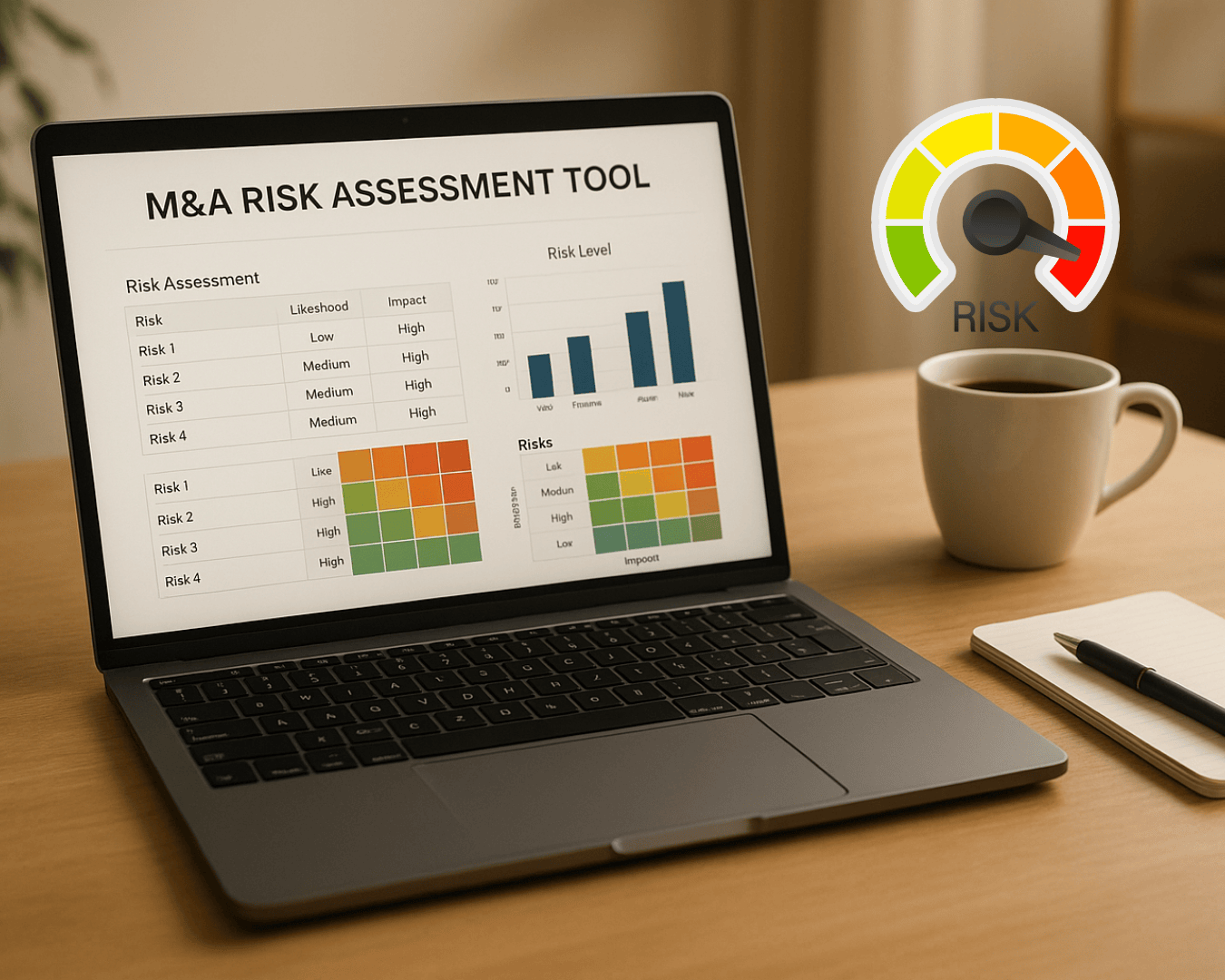When valuing a business, it’s not just about the financials. Understanding the competitive landscape is equally important. Here’s why:
- Market Position: A company’s standing in its industry influences pricing power and customer loyalty.
- Competitive Advantages: Unique strengths like patents, exclusive supplier deals, or strong branding can justify higher valuations.
- Barriers to Entry: Factors like regulatory requirements or high startup costs protect established businesses from new competitors.
- Market Trends: Growth or decline in market share compared to competitors reveals potential risks or opportunities.
Competitive analysis helps buyers make smarter decisions by turning raw data into actionable insights. Comparing metrics like revenue, profit margins, and market share across competitors ensures valuations reflect reality, not just numbers on paper. Tools like AI-powered platforms simplify this process, offering real-time data and deeper industry insights.
Business Valuation 101: The Comparables Analysis Method
Key Parts of Competitive Analysis in Business Valuation
Every element of competitive analysis plays a role in shaping a business's market position and directly affects its valuation metrics. Understanding these dynamics means diving into the factors that influence a company’s standing in its industry and its ability to generate future earnings.
Market Share and Industry Position
Market share reflects how effectively a business captures its market. Companies with a strong foothold often benefit from advantages like operational efficiency and customer recognition, which can translate into higher valuation multiples. Some businesses may not lead the entire market but dominate specific regions or customer segments. Regional dominance, in particular, can lead to better margins and stronger customer loyalty.
The direction of market share growth is just as important as the number itself. Consistent growth signals competitive momentum. In industries where a few players dominate, market leaders often command higher valuation multiples. This is because they can influence pricing, maintain better supplier relationships, and weather economic shifts more effectively. Meanwhile, niche players can also secure strong valuations if they’ve built robust competitive defenses.
These insights into market position lay the groundwork for assessing a company’s operational strengths and vulnerabilities.
Competitive Strengths and Weaknesses
A company’s unique attributes often determine its ability to generate sustainable profits, which directly impacts its valuation. Operational efficiency - measured by metrics like revenue per employee, gross margins, or inventory turnover - can highlight a company’s ability to outperform competitors through better processes, technology, or management systems.
Customer relationships are another key asset. Businesses with high customer retention rates, long-term contracts, or significant switching costs enjoy more predictable revenue streams. Similarly, brand recognition and reputation - whether it's a trusted local eatery or a well-known national brand - create intangible value that new competitors can’t easily replicate, often leading to higher valuations.
On the flip side, weaknesses can drag down a company’s potential. Outdated technology, a shrinking customer base, or heavy reliance on a small number of clients introduces risks that may hurt future performance and, in turn, lower valuation estimates.
Entry Barriers and New Threats
Beyond internal strengths and weaknesses, external factors like barriers to entry play a major role in protecting a company’s market position. These barriers - such as regulatory requirements, licensing, or significant capital investment - can make it difficult for new competitors to enter the market, helping established businesses maintain higher valuations.
Other advantages, like long-standing supplier relationships or economies of scale, can lower costs and further deter competition.
However, these barriers aren’t permanent. Changes in technology, regulations, or customer preferences can weaken them over time. Buyers and investors often assess not just the current level of protection these barriers provide but also how resilient they’ll be in the face of future market shifts.
How Competitive Analysis Changes Valuation Results
Competitive positioning plays a critical role in determining business value and influencing buyer decisions. A company’s standing within its competitive landscape doesn’t just affect daily operations - it fundamentally shapes what buyers are willing to pay. Let’s explore how competitive advantages translate into valuation differences by comparing market leaders and niche players.
Market Leaders vs. Niche Players
Market leaders and niche players bring different strengths to the table, and these differences are reflected in their valuations. Market leaders often command higher valuation multiples because they’ve demonstrated an ability to sustain profitability and maintain dominance over time. Their scale and influence make them attractive to buyers looking for growth opportunities.
On the other hand, niche players can achieve strong valuations by excelling in specialized markets. These businesses often thrive on deeper customer relationships, unique expertise, and reduced competition. While niche players may lack the scalability of market leaders, they offer stability and predictable cash flows within their focused domains.
However, each type faces unique challenges. Market leaders must continuously fend off emerging competitors, while niche players risk market saturation or shifts in customer preferences that could undermine their specialization.
Using Comparable Company Analysis (CCA)
To connect competitive positioning with valuation metrics, Comparable Company Analysis (CCA) provides a practical framework. This method benchmarks valuation multiples - such as price-to-earnings (P/E) ratios or enterprise value-to-revenue (EV/revenue) - by analyzing how similar businesses are valued in the same industry.
CCA becomes especially useful when competitive dynamics create clear valuation tiers. Companies with strong competitive advantages tend to trade at higher multiples, while those under competitive pressure often see their valuations compressed.
For example, if you’re valuing a regional restaurant chain, you wouldn’t directly compare it to national franchises without accounting for differences in market reach, brand strength, and competition. Competitive analysis helps uncover these nuances, allowing you to determine whether the business deserves a premium or a discount compared to its peers.
This approach ensures valuations reflect not just theoretical strengths but actual market realities - what buyers are truly willing to pay for different competitive positions.
The Impact of Changing Competitive Markets
Competitive factors drive valuation, but shifting market conditions can dramatically alter the equation. Competitive landscapes are constantly evolving, and these changes can significantly impact a company’s value over time. Technology disruptions, regulatory shifts, and changing customer preferences are just a few forces that can quickly redefine market dynamics.
Take the rise of e-commerce, for instance. Retailers that embraced online sales early maintained or even enhanced their valuations, while those resistant to digital transformation saw their market positions - and values - decline. Competitive analysis helps identify such trends early, offering crucial insights before these changes fully affect valuations.
"Competitive analysis of the market position is a must-have for a business valuation. Only by comparing to your direct and indirect competitors will you avoid having your 'head in the clouds' about your value and perception from customers. Let’s get 'down to earth' and understand the reality - your position. It’s a good starting point for a realistic and pragmatic approach to business valuation." - Georgy O.
Looking ahead, buyers increasingly rely on forward-looking competitive analysis to gauge not only a company’s current value but also its future potential. This involves assessing how competitive dynamics might shift and what that means for the company’s market position. A business that’s thriving today could face significant challenges if new competitors emerge or if customer preferences evolve.
The timing of these shifts is also critical, as they can influence valuation strategies and buyer decisions. Competitive analysis isn’t just about understanding where a company stands now - it’s about anticipating the road ahead.
sbb-itb-a3ef7c1
Common Problems in Competitive Analysis and Solutions
Conducting competitive analysis is a critical step in determining accurate business valuations. However, buyers often face challenges that can complicate the process, from limited data access to rapidly shifting market conditions. Recognizing these hurdles - and knowing how to address them - can mean the difference between a smart acquisition and a costly error.
Getting Reliable Competitor Data
One of the biggest challenges in competitive analysis is obtaining dependable data about competitors. Private companies rarely share detailed financial information, leaving buyers with significant gaps when trying to benchmark performance or determine valuation multiples.
Traditional methods of gathering competitive intelligence often fall short. Public records offer limited insights, industry reports may be outdated or overly broad, and approaching competitors directly rarely yields meaningful financial data. As a result, buyers sometimes make decisions based on incomplete or unreliable information, which can lead to overpaying or overlooking promising opportunities.
Fortunately, modern technology platforms are stepping in to fill these gaps. Tools like Clearly Acquired use AI to aggregate verified business data and present standardized metrics for similar companies. These platforms prioritize data accuracy through user verification systems and advanced search capabilities, helping buyers identify comparable businesses by industry and location. By leveraging such tools, buyers can reduce guesswork, ensure data reliability, and make more informed valuation decisions. Continuous market monitoring is also crucial to stay ahead of evolving conditions.
Keeping Up with Fast Market Changes
Markets can change quickly, particularly in industries driven by technology or those impacted by regulatory shifts. A competitive analysis that was accurate just a few months ago might now be outdated, leading to valuation mistakes that only become clear after a deal closes.
To address this, real-time market monitoring has become a necessity. Static reports simply can’t keep up with rapid changes. Buyers need access to up-to-date market data, recent transaction details, and insights into emerging competitors to make sound decisions.
AI-powered tools are especially effective here, as they can process large volumes of data quickly and detect trends or threats early. This allows buyers to adapt their strategies in real time. Successful buyers also implement ongoing monitoring processes rather than treating competitive analysis as a one-off task. By continuously gathering competitive intelligence during due diligence, buyers can spot potential red flags early and adjust valuation models as needed. This kind of agility ensures a more balanced approach to assessing price versus true value.
Balancing Price with True Value
Another common challenge is distinguishing between a competitor’s pricing and the actual value they deliver. Focusing solely on revenue multiples can lead buyers to miss critical factors like customer satisfaction or operational efficiency.
For example, a competitor might command higher prices because of strong customer relationships, proprietary technology, or operational advantages that aren’t immediately visible. On the other hand, a lower-priced competitor might be cutting corners, signaling market vulnerabilities or unsustainable practices.
To overcome this, buyers need to go beyond surface-level metrics and evaluate what truly drives value. This includes analyzing customer retention rates, profit margins, operational scalability, and competitive advantages. A well-rounded approach that combines both quantitative and qualitative factors can reveal whether a business is undervalued or overvalued based on its competitive position.
Technology platforms that provide detailed business profiles - including operational metrics and verified performance data - can simplify this process. By accessing standardized data across competitors, buyers can better understand the factors that influence value differences in their target market. This holistic analysis helps uncover opportunities or risks that might otherwise go unnoticed.
Conclusion: Using Competitive Analysis for Better Business Valuations
The Value of Data-Based Information
Competitive analysis turns business valuation into a more accurate and informed process. By examining a company's market position, competitor strengths, and industry trends, buyers can evaluate its worth with greater confidence and clarity. This type of analysis highlights whether a business can maintain premium pricing, faces potential risks from new competitors, or has hidden advantages that might justify a higher valuation.
The U.S. Small Business Administration underscores the importance of market research and competitive analysis as essential steps to defining a competitive edge and ensuring steady revenue streams. Access to federal business statistics, consumer data, and industry-specific trends - often available for free - provides valuable resources for performing competitive analysis in the U.S. market.
Key factors like brand strength and customer loyalty often emerge as significant drivers of value. Businesses with a strong brand and loyal customer base are typically more attractive to buyers, as they offer predictable cash flows and create barriers to entry for competitors. Without a structured competitive analysis, these critical value indicators could easily be overlooked, underscoring how data-backed insights improve valuation precision and buyer confidence.
How Technology Makes Acquisitions Easier
In today’s market, technology has become a game-changer for simplifying the acquisition process. Advanced platforms now integrate competitive analysis with acquisition management tools, offering buyers a seamless way to gather and evaluate data. For example, Clearly Acquired combines verified competitive data, deal management tools, and funding solutions, all powered by AI, to reduce manual work and improve decision-making.
This integration of real-time competitive insights into acquisition tools eliminates the need to juggle multiple platforms. Buyers can access verified business listings, benchmark competitors, and secure financing - all within a single system. This tech-driven approach ensures buyers stay ahead of market changes and have access to reliable competitor data, making the entire process more efficient.
AI tools further enhance this by quickly processing large datasets, identifying trends, and spotting competitive threats early. This capability allows buyers to adjust their valuation strategies on the fly, ensuring their analysis stays relevant and actionable throughout the acquisition process.
Building Confidence in the SMB Acquisition Process
In the U.S. SMB market, competitive analysis is especially critical due to the impact of regional market conditions and economic volatility on business valuations. Shifting market dynamics and competition can significantly alter a business's value, making ongoing analysis essential for businesses in such unpredictable environments.
Buyers and investors increasingly rely on real-time, data-driven insights to guide their acquisition decisions. Leveraging technology platforms to access and analyze competitive data demonstrates thorough due diligence, reduces uncertainty, and builds trust with stakeholders like investors and lenders. This not only increases the chances of closing deals but also lays the groundwork for long-term success.
When buyers can clearly explain how a target company stacks up against competitors and why their valuation is justified, they present a stronger case for their investment. Competitive analysis also uncovers risks and opportunities that might not be immediately visible from financial reports, such as shifts in consumer preferences, regulatory changes, or emerging competitors. These insights validate valuations and empower buyers to make well-informed, confident decisions in even the most dynamic industries.
FAQs
How does competitive analysis improve the accuracy of a business valuation beyond just looking at financial data?
Understanding a business goes beyond just looking at its financial performance. Competitive analysis digs into the bigger picture by examining its market position, industry trends, and how it stacks up against competitors. While financial metrics highlight past performance, competitive analysis sheds light on external factors - like market shifts, risks, and opportunities - that shape the company’s future.
When you pair financial data with insights from competitive analysis, it creates a more complete view of the business. This approach helps buyers make smarter decisions, as it considers both the current performance and the broader market landscape. The result? Valuations that better reflect not just where the business stands today, but where it could go tomorrow.
How do market trends and competition affect a company's valuation over time?
The Impact of Market Trends and Competition on Business Valuation
Market trends and the competitive landscape are major factors that influence how a company is valued. Shifts in technology, changing consumer preferences, new regulations, or broader economic conditions can either raise or lower a business's perceived worth. For instance, companies that stay ahead of emerging trends or maintain a strong competitive position are often viewed as safer investments with higher growth potential, which directly enhances their valuation.
By staying attuned to these changes, business owners and investors can spot opportunities, reduce risks, and make smarter decisions. Conducting a thorough competitive analysis can reveal potential challenges, highlight areas that need improvement, and, over time, help increase a company's valuation.
How can businesses leverage AI and technology to enhance competitive analysis and improve valuation accuracy?
Businesses today can tap into AI and technology to gain a clearer view of their competitive landscape, empowering them to make smarter decisions that can enhance valuation outcomes. Tools like real-time market analysis, predictive analytics, and financial modeling allow companies to spot trends, measure performance against competitors, and identify growth opportunities with greater precision.
AI-driven tools also simplify tasks such as tracking competitors' strategies, evaluating SEO performance, and analyzing social media trends. These insights not only help businesses anticipate market changes but also guide better decisions during mergers, acquisitions, and other investment activities. Armed with data-driven insights, companies can position themselves more effectively to achieve stronger valuation results.












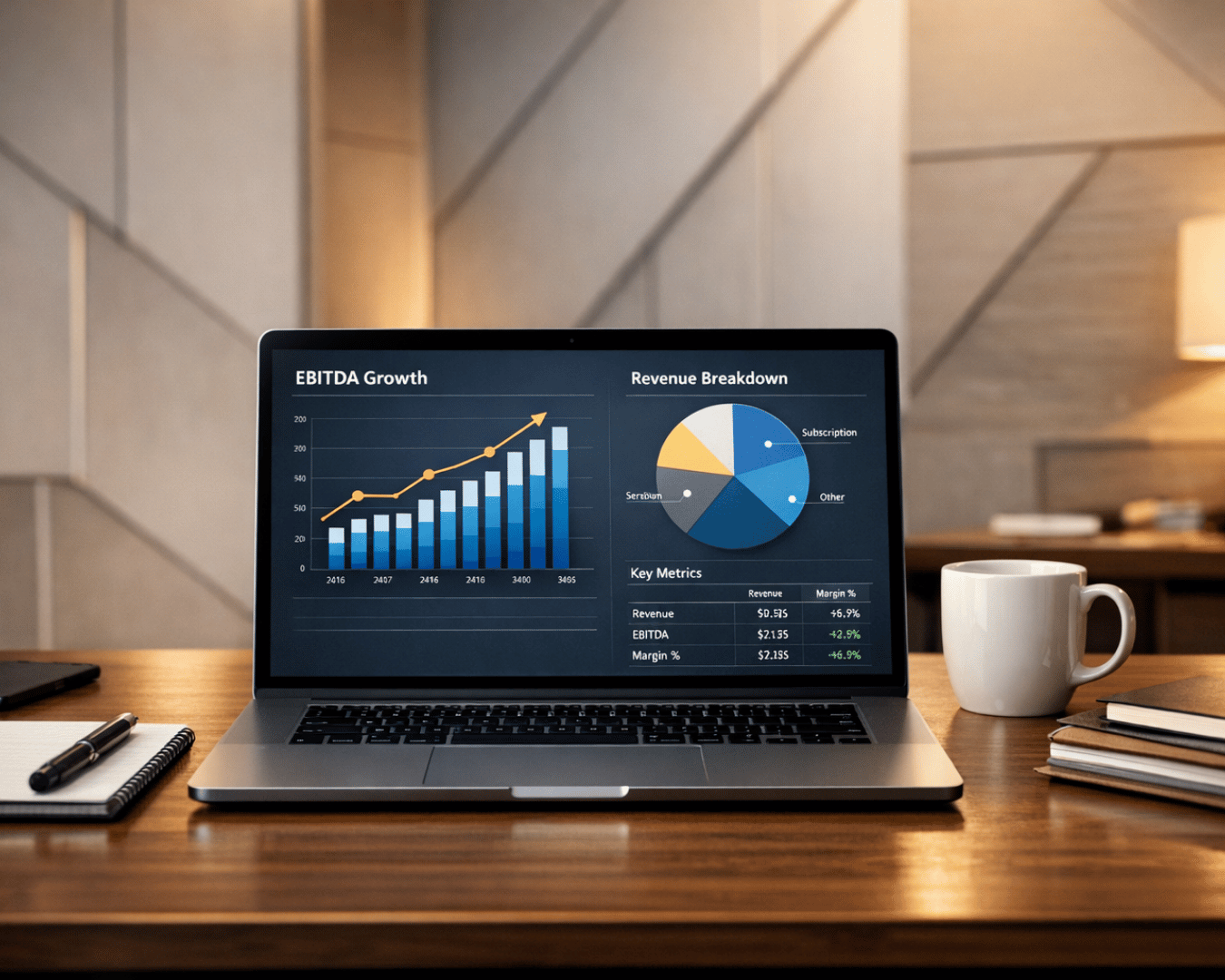










.png)
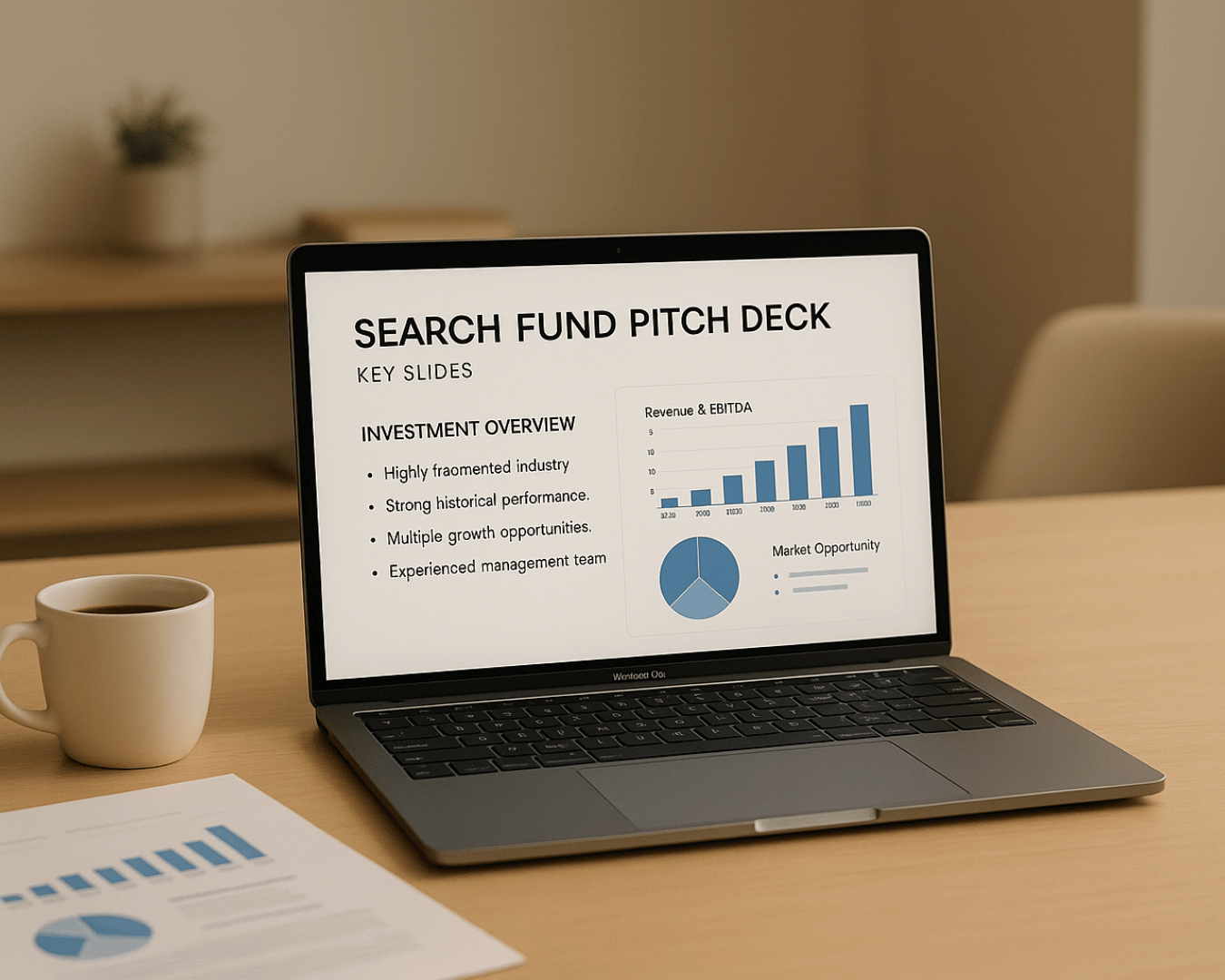






































.png)










